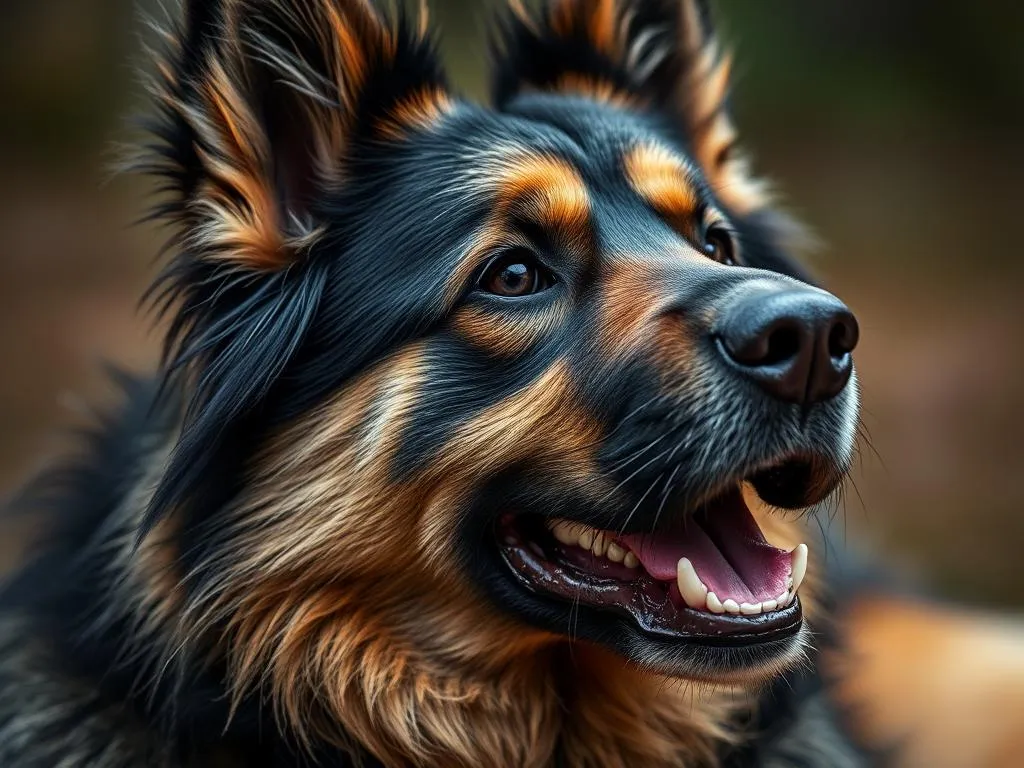
I. Introduction
Dogs have been cherished companions to humans for thousands of years, playing vital roles in society from working alongside farmers to providing emotional support in homes. Among the many breeds, the Norwegian Buhund stands out as a unique and delightful option for dog lovers. This breed, known for its intelligence and spirited personality, offers a rich history and an array of characteristics that make it an appealing choice for potential pet owners. Understanding the specifics of the Norwegian Buhund is essential for ensuring that both the dog and the owner thrive in their relationship.
II. History of the Norwegian Buhund
A. Origins of the Breed
The Norwegian Buhund has deep roots in Norway, where it has been an integral part of rural life for centuries. This breed is believed to have descended from the ancient spitz-type dogs that roamed the region, serving various roles in agriculture and daily life. Historically, Buhunds were utilized as herders, guardians of livestock, and companions to the Norwegian people. Their ability to work closely with humans and adapt to challenging environments made them invaluable.
B. Evolution of the Breed
Over the years, the Norwegian Buhund has evolved, maintaining its core characteristics while adapting to modern needs. Crossbreeding with other similar breeds has influenced its development, but the Buhund has remained distinct in its appearance and temperament. Official recognition by kennel clubs, including the Norwegian Kennel Club and the American Kennel Club (AKC), has helped promote the breed, ensuring that the Norwegian Buhund retains its unique traits while becoming a popular choice among dog lovers worldwide.
III. Physical Characteristics
A. Size and Weight
The Norwegian Buhund is a medium-sized dog, typically standing between 16 to 18 inches tall at the shoulder. Their weight generally ranges from 26 to 40 pounds, making them a manageable size for various living environments. Compared to similar breeds like the Finnish Lapphund or Swedish Vallhund, the Buhund is slightly taller and more agile, which contributes to its herding capabilities.
B. Coat and Color
The coat of the Norwegian Buhund is double-layered, featuring a soft, dense undercoat and a coarser outer coat that protects against harsh weather. This breed typically sports a range of colors, including black, cream, and shades of red. Some Buhunds may also have white markings on their paws, chest, or face, adding to their distinctive appearance. Regular grooming is essential to keep their coat healthy and free from mats, especially during shedding seasons.
C. Distinctive Features
One of the most recognizable features of the Norwegian Buhund is its erect, triangular ears, which contribute to its alert and expressive demeanor. Their curled tail, which rests over their back, adds to their charm, while their dark, almond-shaped eyes convey intelligence and warmth. These unique physical traits not only enhance the breed’s appeal but also serve functional purposes, such as aiding in their hearing and communication.
IV. Temperament and Behavior
A. General Temperament
The Norwegian Buhund is known for its friendly, energetic, and loyal temperament. These dogs are spirited and enjoy being active, making them excellent companions for families and individuals who lead a dynamic lifestyle. Compared to other breeds, Buhunds are often more social and eager to please, which can make training enjoyable and rewarding. Their intelligence allows them to learn commands quickly, but they also require consistent leadership to thrive.
B. Socialization Needs
Early socialization is crucial for the Norwegian Buhund. Introducing them to a variety of people, pets, and environments helps to develop their confidence and well-rounded nature. Best practices for socializing a Buhund include puppy classes, playdates with other dogs, and exposure to different environments. This breed generally gets along well with children and other pets when properly socialized, but supervision is always recommended.
C. Activity Level
The Norwegian Buhund is highly active and requires regular exercise to maintain its physical and mental health. Daily walks, playtime, and engaging activities such as agility training or herding exercises are recommended. This breed thrives on interaction and will become bored without proper stimulation, which can lead to destructive behaviors. Ideally, a Buhund should have at least an hour of exercise each day to keep them happy and well-adjusted.
V. Health and Lifespan
A. Common Health Issues
While the Norwegian Buhund is generally healthy, like all breeds, they are prone to certain health issues. Common concerns include hip dysplasia, eye disorders such as cataracts, and skin allergies. Regular veterinary check-ups, a healthy diet, and a proactive approach to health care can help prevent many of these issues. Being aware of breed-specific health concerns allows owners to take preventive measures to ensure their dog remains healthy.
B. Lifespan
The average lifespan of a Norwegian Buhund is around 12 to 15 years, which is typical for medium-sized breeds. Factors influencing their longevity include genetics, diet, exercise, and overall healthcare. Providing a balanced diet, regular vet visits, and ensuring they remain active can significantly impact their quality of life and lifespan.
VI. Care and Maintenance
A. Grooming Needs
Grooming the Norwegian Buhund is essential to keep their coat in top condition. They shed moderately throughout the year, with heavier shedding occurring during seasonal changes. Brushing at least once a week is recommended to remove loose hair and prevent mats. Bathing should be done as needed, using dog-friendly shampoos to maintain coat health.
B. Diet and Nutrition
The dietary needs of the Norwegian Buhund should be tailored to their age, size, and activity level. A high-quality dog food that meets the nutritional requirements of active breeds is essential. Portion sizes should be adjusted based on their daily exercise to prevent obesity, which can lead to health problems. Consulting with a veterinarian about the best feeding practices is advisable for new owners.
C. Training Recommendations
Training a Norwegian Buhund can be a rewarding experience due to their intelligence and eagerness to please. Positive reinforcement techniques, such as praise and treats, work best for this breed. Basic obedience training should be a priority, along with activities that provide mental stimulation, such as puzzle toys or scent games. Consistent training not only enhances their behavior but also strengthens the bond between dog and owner.
VII. Norwegian Buhund in Popular Culture
A. Representation in Media
The Norwegian Buhund has made its mark in popular culture, appearing in various films and literature where loyal and spirited dogs are showcased. While not as widely recognized as some other breeds, Buhunds are celebrated in niche circles for their unique qualities and charming personalities.
B. Recognition by Dog Shows
The Norwegian Buhund has gained recognition in dog shows and competitions, showcasing their agility and trainability. Notable accomplishments include participation in herding trials and obedience competitions. Such recognition has contributed to the breed’s growing popularity and awareness among dog enthusiasts.
VIII. Conclusion
In summary, the Norwegian Buhund is a breed characterized by its energetic personality, loyalty, and intelligence. Understanding its history, physical characteristics, temperament, and care requirements is crucial for potential owners. This breed’s unique traits and sociable nature make it an excellent choice for active families and individuals.
IX. FAQs
A. Common Questions About Norwegian Buhunds
-
Are Norwegian Buhunds good with children?
Yes, they are known to be friendly and playful, making them great companions for children. -
Do Norwegian Buhunds shed a lot?
They shed moderately, with heavier shedding during certain seasons, so regular grooming is important. -
How much exercise do they need?
A Norwegian Buhund typically requires at least an hour of exercise each day to stay happy and healthy.
B. Tips for New Owners
- Begin socialization early to help your Buhund become a well-rounded dog.
- Establish a consistent training routine to harness their intelligence.
- Provide mental stimulation through interactive toys and games to keep them engaged.
With their vibrant personalities and strong bonds with their families, Norwegian Buhunds are sure to bring joy and companionship to any home.









